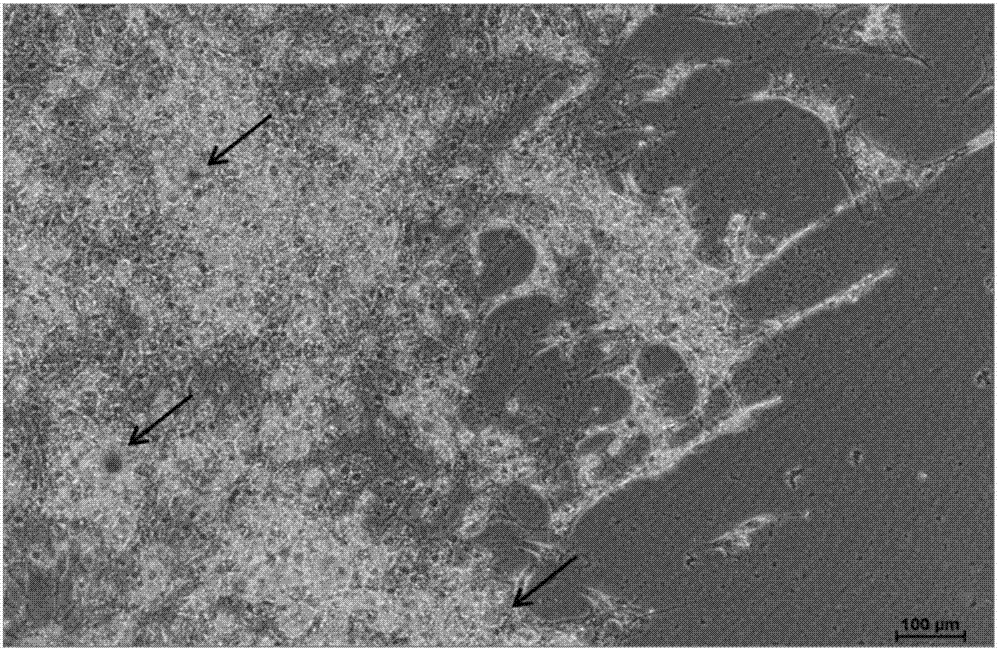Megalobrama amblycephala bone tissue culture method
A technique for tissue cells and bream, applied in the field of cells, can solve problems such as limited use of trypsin digestion, and achieve the effects of low cost, solving technical difficulties, and simple and easy methods.
- Summary
- Abstract
- Description
- Claims
- Application Information
AI Technical Summary
Problems solved by technology
Method used
Image
Examples
Embodiment 1
[0034] A method for culturing bream bone tissue cells, the steps are:
[0035] 1) Choose 3-month-old bream in good growth condition as the material (fresh or dead), and soak it in 0.01% potassium permanganate solution for 20 minutes before the experiment. Put it into the aseptic operating table, and disinfect the fish body with 75% (volume ratio) alcohol;
[0036] 2) Use a sterilized scalpel to cut off the caudal fin under aseptic conditions, cut off the entire tail from the direction behind the cloaca, carefully peel off the skin with tweezers, soak the tissue block in PBS, and use ophthalmic forceps and tweezers under a dissecting microscope. Peel off the muscles around the tailbone and ribs with a scalpel, and take the connective tissue close to the tailbone and ribs of bream (fresh or dead);
[0037] 3) After rinsing the tissue block with PBS 3 times in the petri dish, cut it to 2mm with ophthalmic scissors 3 ; Wet the tissue pieces one by one in fetal bovine serum, care...
PUM
 Login to View More
Login to View More Abstract
Description
Claims
Application Information
 Login to View More
Login to View More - R&D
- Intellectual Property
- Life Sciences
- Materials
- Tech Scout
- Unparalleled Data Quality
- Higher Quality Content
- 60% Fewer Hallucinations
Browse by: Latest US Patents, China's latest patents, Technical Efficacy Thesaurus, Application Domain, Technology Topic, Popular Technical Reports.
© 2025 PatSnap. All rights reserved.Legal|Privacy policy|Modern Slavery Act Transparency Statement|Sitemap|About US| Contact US: help@patsnap.com



